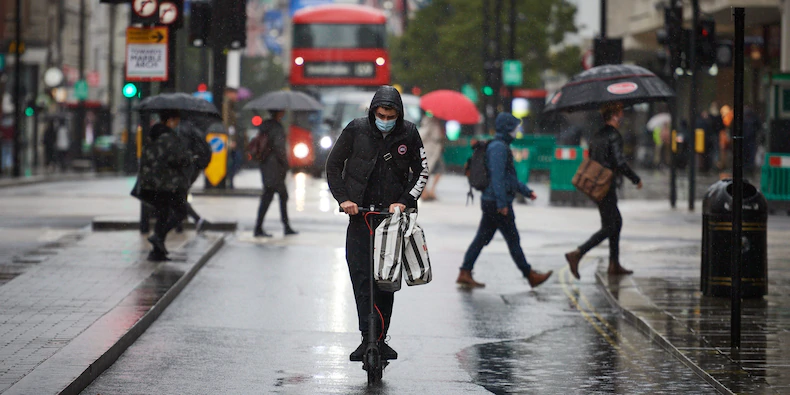
[ad_1]

Leon Neal/Getty Images
- The UK economy grew by a record 15.5% in the third-quarter, according to official data released Thursday, marking its sharpest quarterly expansion since records began in 1955.
- With much of the country now in its second lockdown, economists expect the UK to reverse its pace of growth in the final quarter this year.
- The UK is still 9.7% smaller than it was before the COVID-19 pandemic.
- Britain has become the first to pass 50,000 coronavirus fatalities in Europe.
- ING economists expect a 6% to 7% slide in monthly GDP and a negative figure for the fourth-quarter after the UK’s month-long second lockdown.
- Visit Business Insider’s homepage for more stories.
The UK economy expanded by the most on record in the third-quarter as the country bounced back from its coronavirus-fueled recession earlier this year, according to data released Thursday by the national statistics authority.
But Britain is now the first in Europe to surpass 50,000 coronavirus deaths and one of five to have crossed that milestone, following the US, Brazil, India, and Mexico.
The record 15.5% GDP growth in the quarter was in line with market expectations for a vigorous rebound, said Dean Turner, economist at UBS Global Wealth Management.

ONS
Read More: Alex Umansky has been one of the world’s best stock pickers for years, and his fund is making 6 times more than the competition in 2020. He told us the 4 pillars to his investing approach.
“Notwithstanding the strong rebound from Q2, the numbers reveal that the economy was 9.7% below its pre-crisis levels at the end of September,” Turner said. “Also notable, is that the GDP gap relative to pre-crisis levels is larger than that seen in the US, France, and Germany.”
The Bank of England said last week it expects the UK economy to contract by 11% this year, after a second lockdown came into force in early November.
The lockdown and a surging unemployment rate could lead to a slow march to a long winter, said Richard Pearson, director at investment platform, EQi. “In what should be the busiest shopping season, we are met with shuttered high streets across the country and an impending hit to the GDP on the horizon, igniting fears of a ‘W’ shaped recovery,” Pearson said.
ING economists expect to see a 6% to 7% slide in monthly GDP and a negative figure for the fourth-quarter post the month-long lockdown. Still, it would not be as harsh as the 25% decline seen at the start of the pandemic.
September’s meagre 1.1% growth pointed to a slowdown in the economy’s revival. This data point would be most noteworthy for policymakers because it shows recovery was already weakening well in advance of the latest widespread restrictions on activity, said Hugh Gimber, global market strategist at JPMorgan Asset Management.
But positive developments on the COVID-19 vaccine front may prove to be a boost for UK GDP.
“Now, it is clear that the UK’s economy has lagged many other regions around the world over the summer, which creates the potential for a vaccine to have a larger economic impact in the UK if it helps to accelerate the return to more normal levels of activity,” Gimber said.
Read More: Buy these 13 stocks that offer stable and predictable growth without the excessive valuations of big tech, Credit Suisse says
[ad_2]
Source link